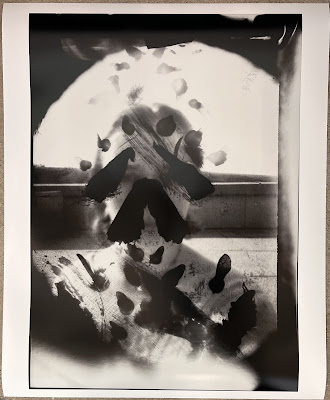John Chiara is a contemporary American experimental photographer based in California. Chiara creates his images by directly manipulating photosensitive paper. To counter loss of information during the enlargement process in the dark room, he developed his own large cameras. His process seems to borrow from pinhole photography (but more complicated) and is described as the following:
“Once he selects a location, he situates, and then physically enters, the camera, and maneuvers in near total darkness a sheet of positive color photographic paper onto the camera's back wall. Throughout each exposure, his instinctive control limits the light entering the lens. He uses his hands to burn and dodge the large-scale images, and develops them in a spinning drum by agitating the chemistry over photographic paper lining the interior of the drum. This process often leaves traces behind on the resulting images.”
…
Chiara's photographs are strongly perceptual, eliciting a visceral response, yet are rendered in soft hues that exude a strong sense of the viscosity of material and the ephemerality of presence.
-These effects of the spinning drum, and his overall development/creation process for the photographs creates “imperfections” that Chiara embraces, but at the same time his photographs are highly detailed because of the large paper and cameras.


































